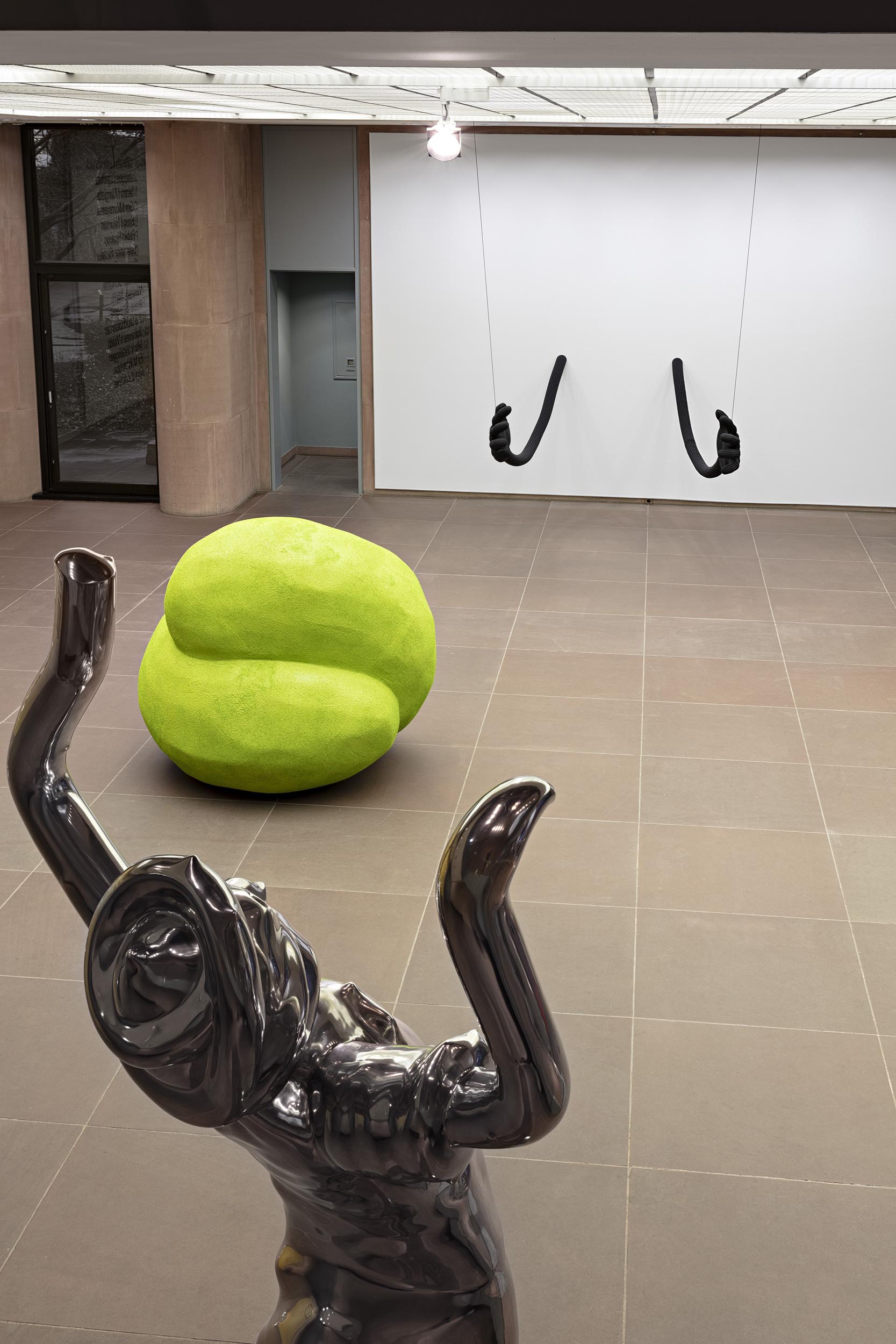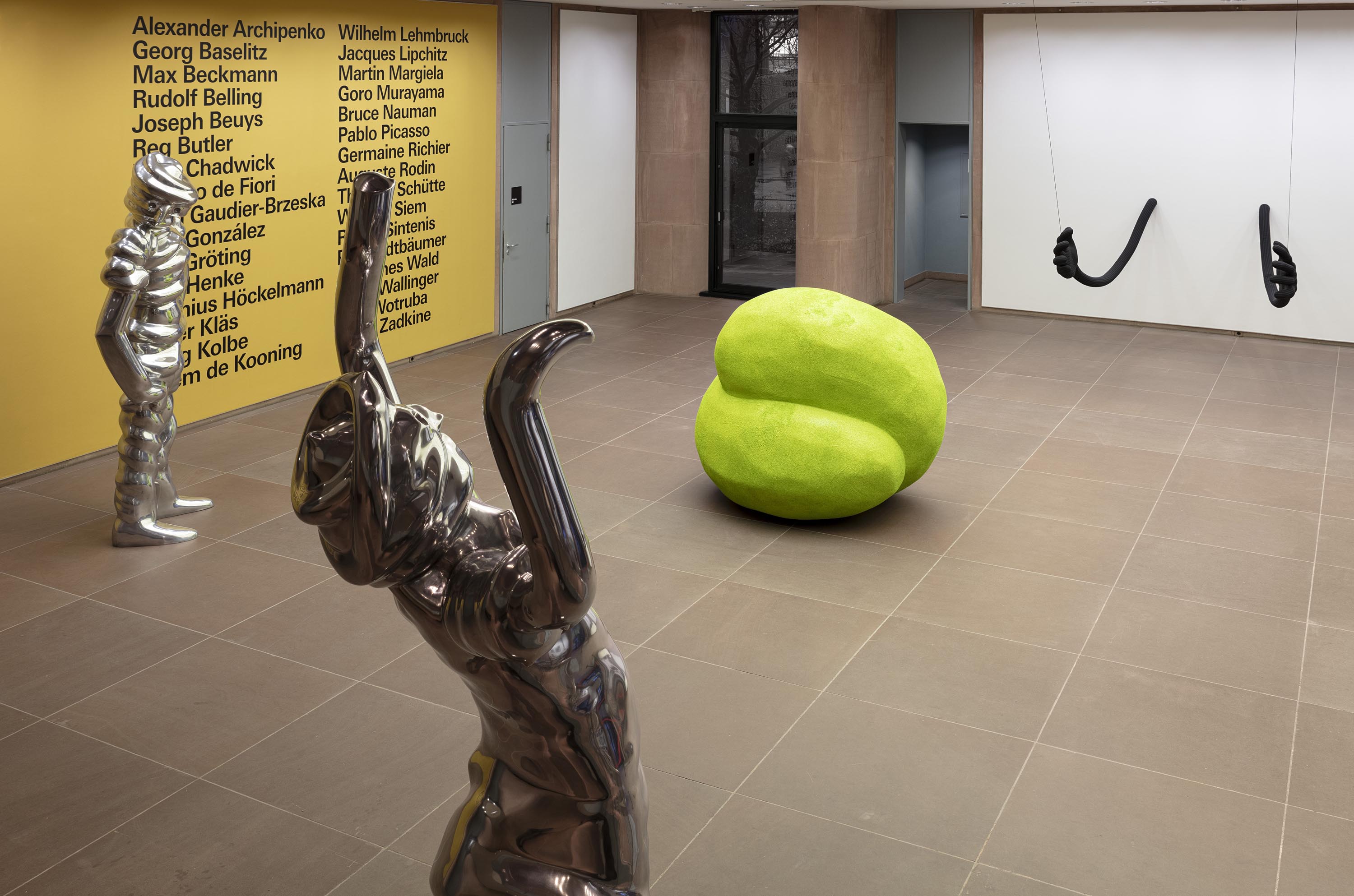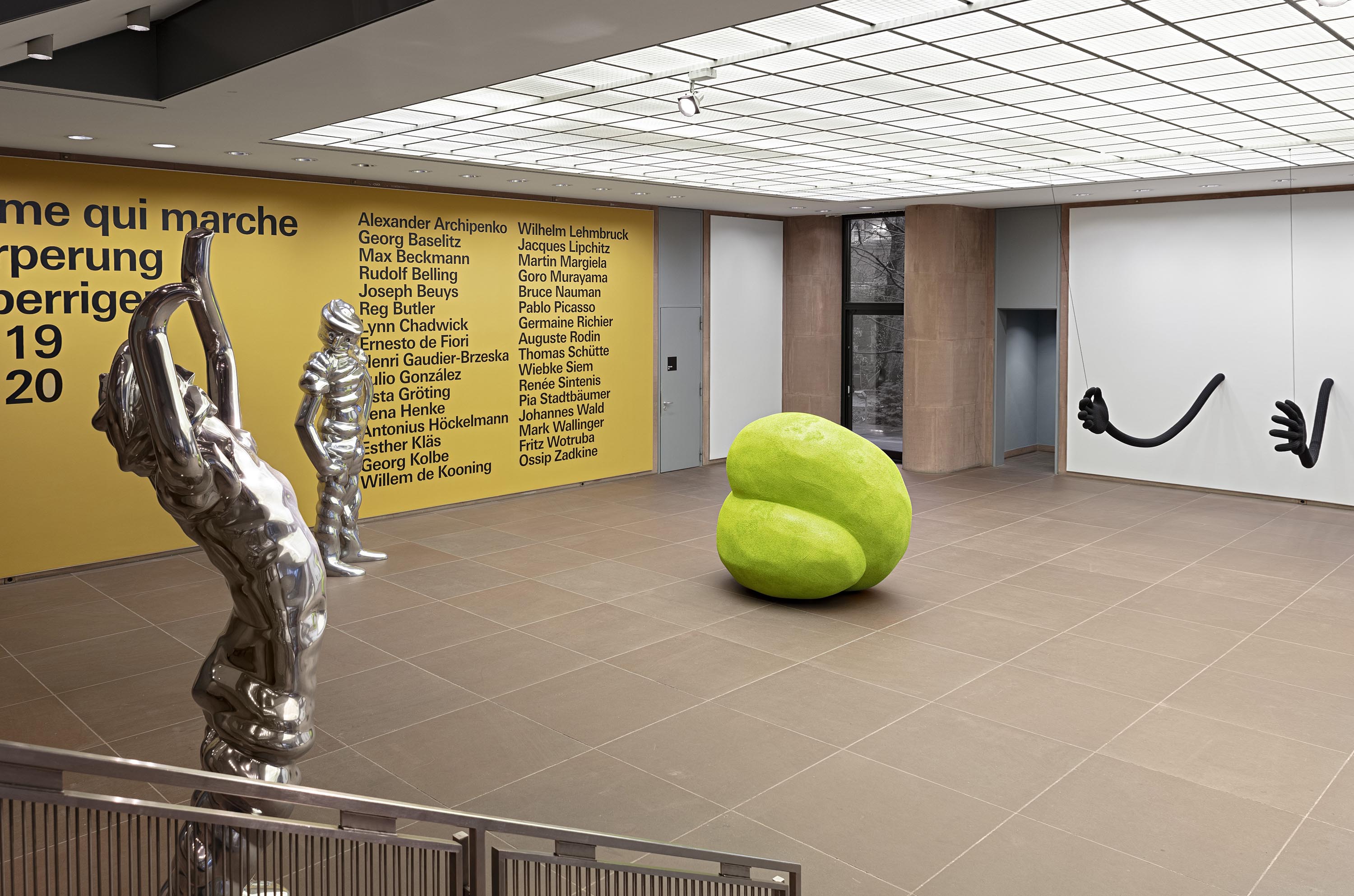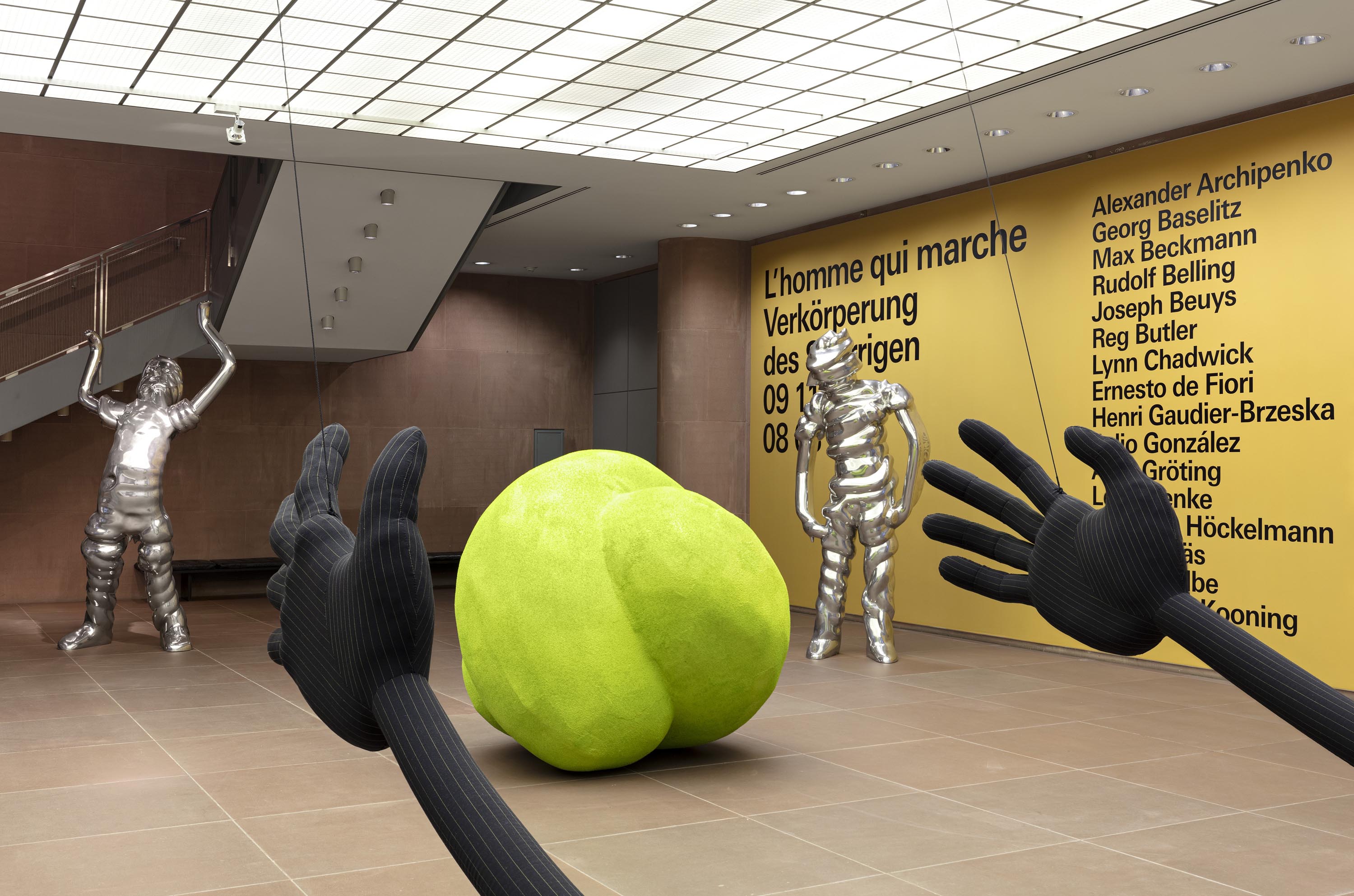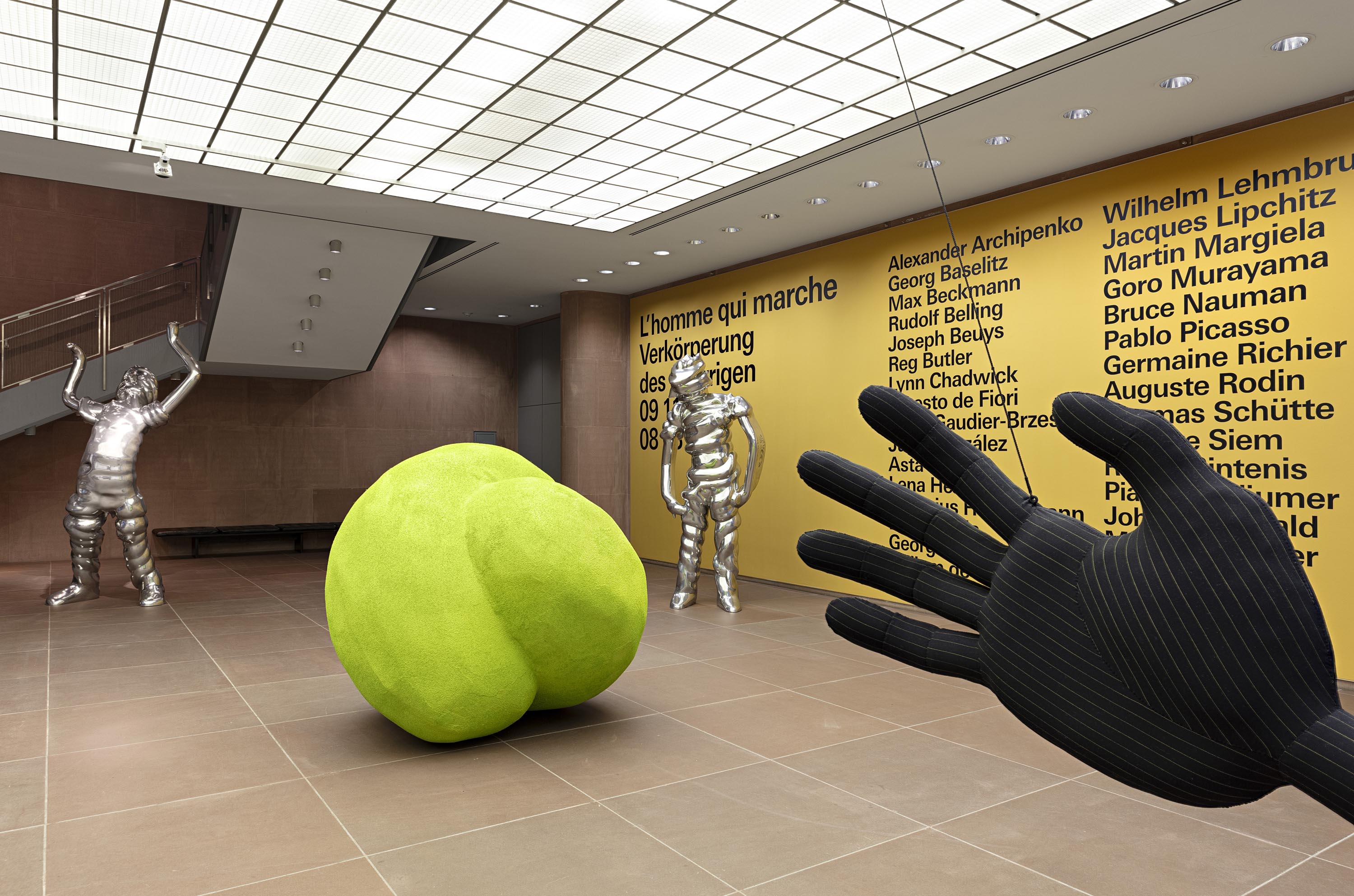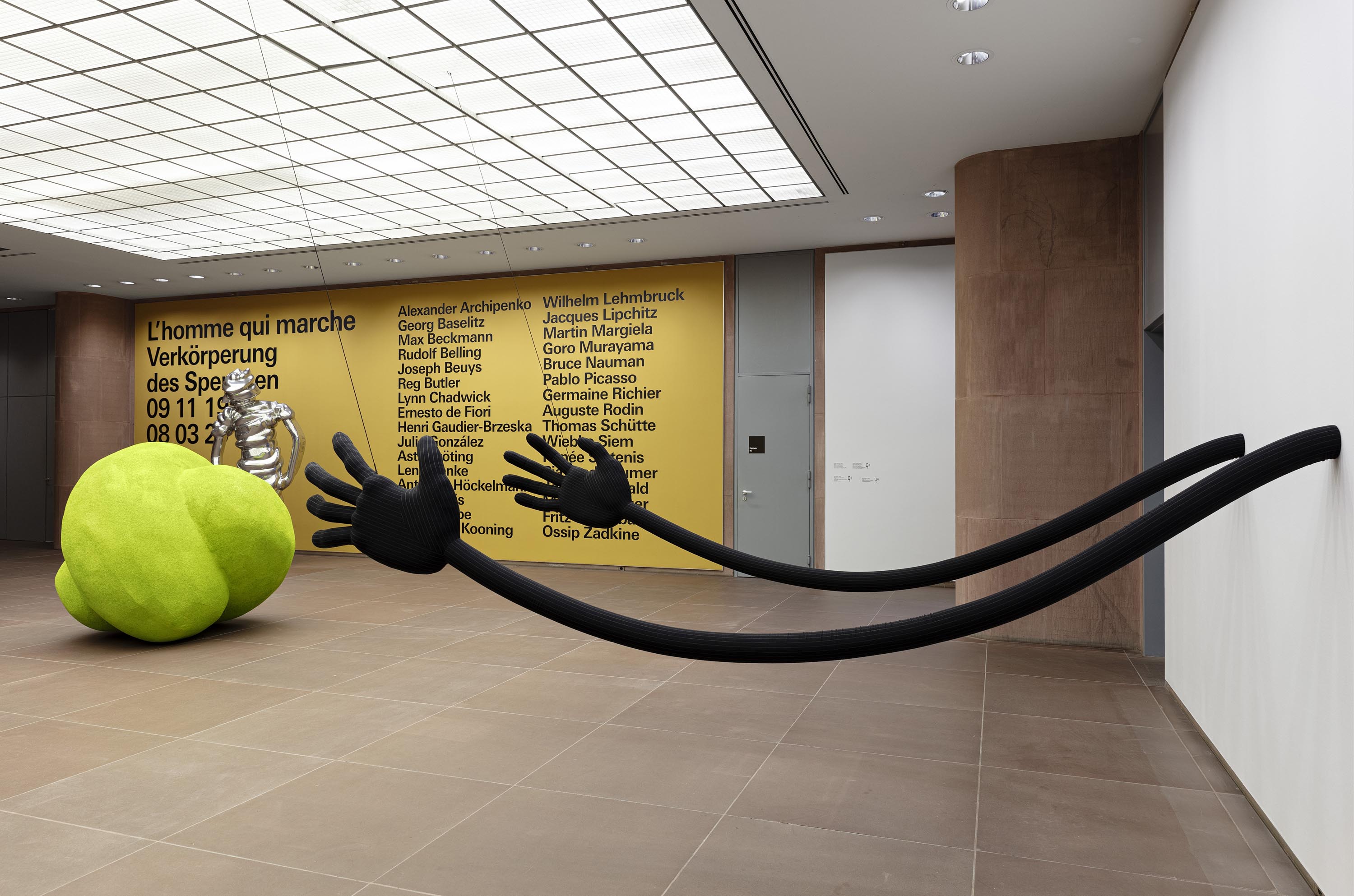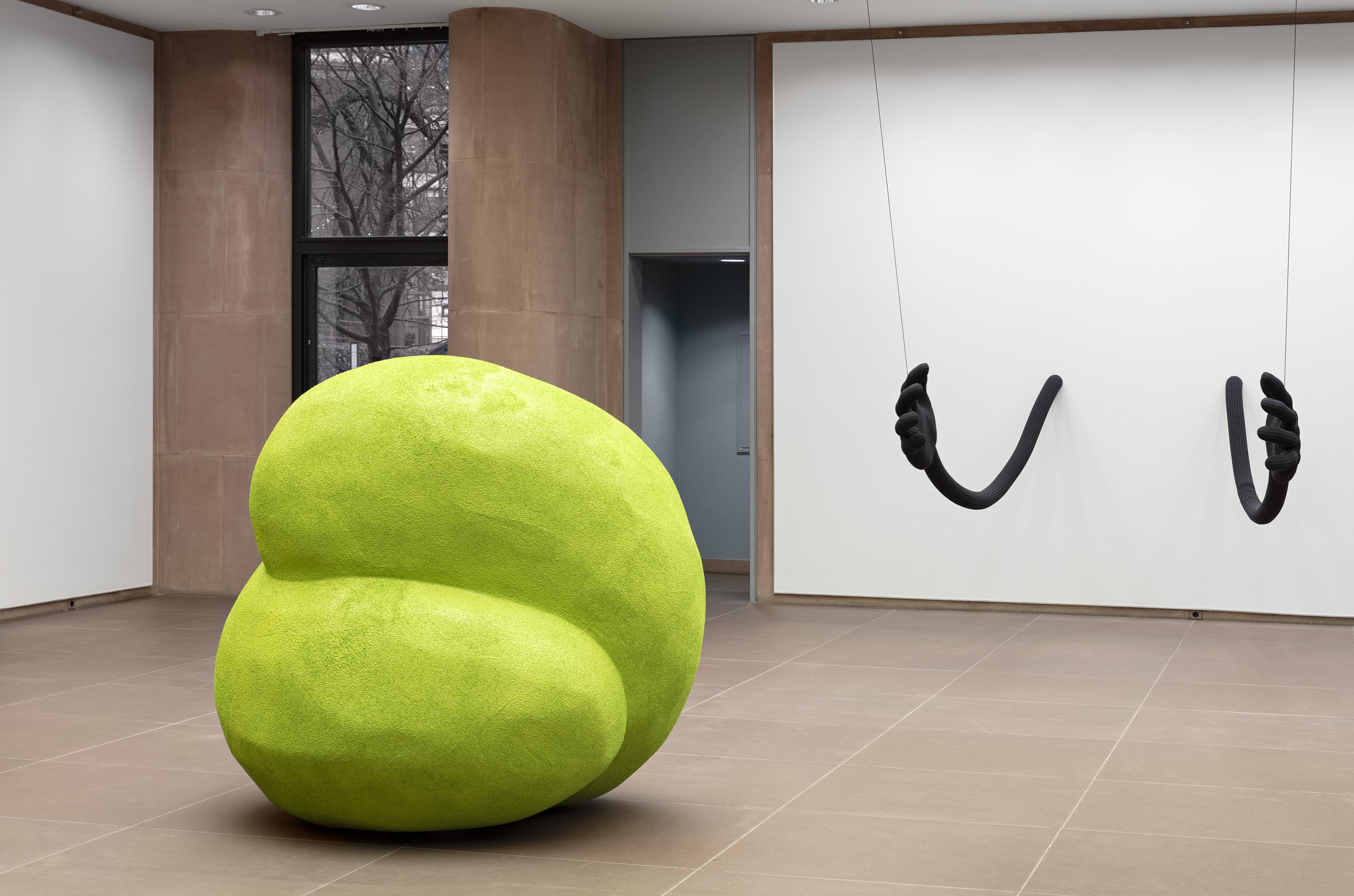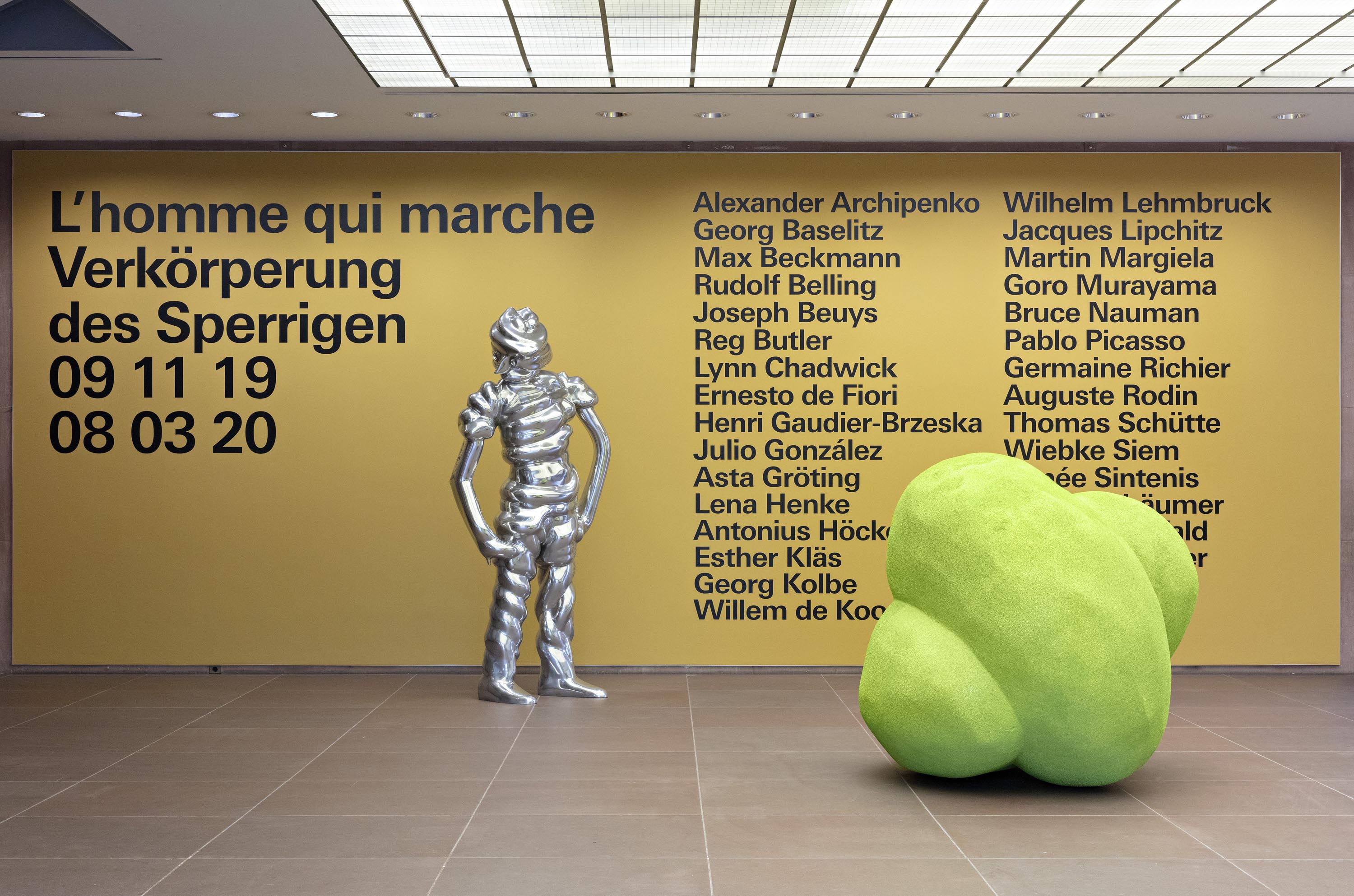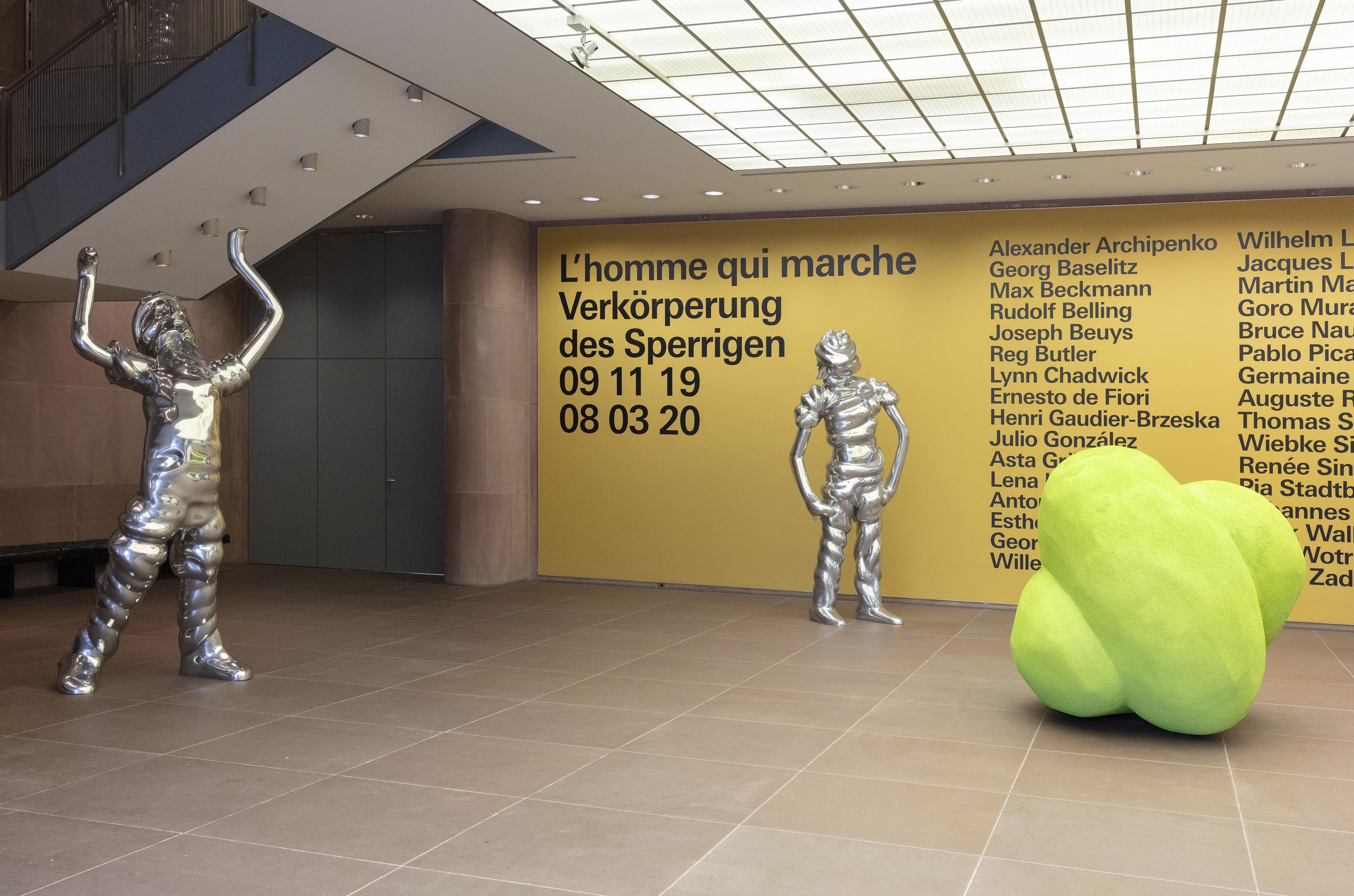CLOSE
2024
Heidi Horten Museum, Vienna, Austria (forthcoming)
PPC, Frankfurt, Germany (forthcoming)
06.08-08.10.2024
Skulptur Projekte Stockholm
Beau Travail
Stockholm, Sweden
Skulptur Projekte Stockholm
Beau Travail
Stockholm, Sweden
05.23-07.27.2024
Our Porcelain Thoughts
DREI
Cologne, Germany
Our Porcelain Thoughts
DREI
Cologne, Germany
11.04-05.18.2024
Dark Glasses
Layr
Vienna
Dark Glasses
Layr
Vienna
2023
15.12.2023 – 07.04.2024
Your and your vim
Aspen Art Museum
Colorado, USA
Your and your vim
Aspen Art Museum
Colorado, USA
02.09.2023-07.01.2024
Good Year
MARTa Museum Herford
Herford, Germany
Good Year
MARTa Museum Herford
Herford, Germany
03.05-14.06.2023
Nature wills it
The Ranch
Montauk, New York
Nature wills it
The Ranch
Montauk, New York
04.11-10.12.2022
Apple Red Cranberry House
Bortolami
New York
Apple Red Cranberry House
Bortolami
New York
27.08-11.12.2022
Forest Through The Trees
Laumeier Sculpture Park
St. Louis, Missouri
Forest Through The Trees
Laumeier Sculpture Park
St. Louis, Missouri
2022
30.04-30.07.2022
Auf dem Asphalt botanisieren gehen
Klosterfelde Edition
Berlin
Auf dem Asphalt botanisieren gehen
Klosterfelde Edition
Berlin
30.04-11.06.2022
Looking Through the Threshold
carlier gebauer
Berlin
Looking Through the Threshold
carlier gebauer
Berlin
17.02-28.10.2022
ALDO ROSSI’S SLEEPING ELEPHANT
Belvedere
Vienna, Austria
ALDO ROSSI’S SLEEPING ELEPHANT
Belvedere
Vienna, Austria
2021
26.10.2021–29.01.2022
Lives of an Object
ARCH
Athens, Greece
Lives of an Object
ARCH
Athens, Greece
12.06.-17.10.2021
Lichtenfels Sculpture
Austria
Lichtenfels Sculpture
Austria
28.04.-20.06.2021
I Think I Look More like the Chrysler Building
Vleeshal
Middelburg
I Think I Look More like the Chrysler Building
Vleeshal
Middelburg
27.03.2021-28.03.2021
Friend of a Friend
Warsaw
Poland
Friend of a Friend
Warsaw
Poland
2020
09.12.2020-30.01.2021
Babysteps into Masochism
Emanuel Layr
Vienna, Austria
Babysteps into Masochism
Emanuel Layr
Vienna, Austria
10.09.2020-07.11.2020
Fate of a cell / Η Τύχη ενός Κυττάρου
Martinos
Athens
Fate of a cell / Η Τύχη ενός Κυττάρου
Martinos
Athens
19.09.2020-31.10.2020
Ice to Gas
Pedro Cera
Lisbon
Ice to Gas
Pedro Cera
Lisbon
11.09.2020-17.19.2020
Various Others
Sperling, München
Munich, Germany
Various Others
Sperling, München
Munich, Germany
09.11.2019-08.03.2020
R.M.M. Rockefeller Center
Rockefeller Center
New York, NY
R.M.M. Rockefeller Center
Rockefeller Center
New York, NY
09.11.2019-08.03.2020
L’homme qui marche
Kunsthalle Bielefeld
Bielefeld, Germany
L’homme qui marche
Kunsthalle Bielefeld
Bielefeld, Germany
2019
27.09.2019―26.01.2020
My Fetish Years
Museum für Gegenwartskunst
Siegen, Germany
My Fetish Years
Museum für Gegenwartskunst
Siegen, Germany
11.01.―16.02.2019
Germanic Artifacts
Bortolami
New York, USA
Germanic Artifacts
Bortolami
New York, USA
2018
13.10.―22.12.2018
Positioner
Matthew Marks
Los Angeles, USA
Positioner
Matthew Marks
Los Angeles, USA
15.05.―21.07.2018
THEMOVE
Emanuel Layr Gallery
Vienna, Austria
THEMOVE
Emanuel Layr Gallery
Vienna, Austria
03.03.―13.05.2018
An Idea of Late German Sculpture; To The People Of New York, 2018
Kunsthalle Zürich
Zürich, Switzerland
An Idea of Late German Sculpture; To The People Of New York, 2018
Kunsthalle Zürich
Zürich, Switzerland
09.03.―22.07.2018
Between The Waters
Whitney Museum of Art
New York, USA
Between The Waters
Whitney Museum of Art
New York, USA
17.03.―28.04.2018
Embrassade
Fons Welters
Amsterdam, Netherlands
Embrassade
Fons Welters
Amsterdam, Netherlands
2017
19.01.―08.04.2017
Year Of The Monkey
Galerie Emanuel Layr
Rome, Italy
Year Of The Monkey
Galerie Emanuel Layr
Rome, Italy
28.04.―30.07.2017
SCHREI MICH NICHT AN, KRIEGER!
Schirn Kunsthalle
Frankfurt, Germany
SCHREI MICH NICHT AN, KRIEGER!
Schirn Kunsthalle
Frankfurt, Germany
09.04.―30.05.2017
Vertical Gardens
Antenna Space
Shanghai, China
Vertical Gardens
Antenna Space
Shanghai, China
03.06.―03.09.2017
Die Kommenden
Sprengel Museum
Hannover, Germany
Die Kommenden
Sprengel Museum
Hannover, Germany
14.09.―25.10.2017
in awe
Kunsthalle Exnergasse
Vienna, Austria
in awe
Kunsthalle Exnergasse
Vienna, Austria
06.2017
Art Basel Parcours
Art Basel
Basel, Switzerland
Art Basel Parcours
Art Basel
Basel, Switzerland
2016
07.06.―11.09.2016
Outrageous Acts and Everyday Rebellions
Kaufmann Repetto
Milan, Italy
Outrageous Acts and Everyday Rebellions
Kaufmann Repetto
Milan, Italy
28.01.―27.02.2016
RUN, RUN, RUNWAY
Golsa
Oslo, Norway
RUN, RUN, RUNWAY
Golsa
Oslo, Norway
27.02.―26.03.2016
Heartbreak Highway
Real Fine Arts
New York, USA
Heartbreak Highway
Real Fine Arts
New York, USA
17.06.―27.08.2016
My History of Flow
S.A.L.T.S.
Basel, Switzerland
My History of Flow
S.A.L.T.S.
Basel, Switzerland
04.07.―16.09.2016
fat center trash land 1―7, 2016
Small scale Sculpture triennial Fellbach
Fellbach, Germany
fat center trash land 1―7, 2016
Small scale Sculpture triennial Fellbach
Fellbach, Germany
09.09.―05.11.2016
Fieber
Emanuel Layr Gallery
Wien, Austria
Fieber
Emanuel Layr Gallery
Wien, Austria
04.07.―16.09.2016
In Bed with M/L Artspace
9th Berlin Biennale
Berlin, Germany
In Bed with M/L Artspace
9th Berlin Biennale
Berlin, Germany
03.12.2016―12.02.2017
Available Light
Kunstverein Braunschweig
Braunschweig, Germany
Available Light
Kunstverein Braunschweig
Braunschweig, Germany
2015
2015
Surrounding Audience
The New Museum Triennial
New York, USA
Surrounding Audience
The New Museum Triennial
New York, USA
09.2015
Emerging Artist Fellowship Exhibition
Queens
New York, USA
Emerging Artist Fellowship Exhibition
Queens
New York, USA
26.02.―04.04.2015
Looking at you (revived) again
Off Vendom
New York, USA
Looking at you (revived) again
Off Vendom
New York, USA
28-05.―16.05.2015
One step away from further Hell
Vilma Gold
London, UK
One step away from further Hell
Vilma Gold
London, UK
23.11.2015―08.01.2016
National Gallery 2―Empire Map
Chewday’s
London, UK
National Gallery 2―Empire Map
Chewday’s
London, UK
22.02.―05.04.2015
The problem today is not the other but the self
MINI/Goethe-Institut Ludlow 38
New York, USA
The problem today is not the other but the self
MINI/Goethe-Institut Ludlow 38
New York, USA
2014
09.05.2014-19.07.2014
Warm Math
Balice Hertling, New York
New York
Warm Math
Balice Hertling, New York
New York
05.2014
Frieze New York
Frieze Art Fair at Randall’s Island
New York, USA
Frieze New York
Frieze Art Fair at Randall’s Island
New York, USA
02.05.―07.06.2014
Bloomington: Mall Of America
Bortolami Gallery
New York, USA
Bloomington: Mall Of America
Bortolami Gallery
New York, USA
27.04.―01.06.2014
YES, I’M PREGNANT
Skulpturen museum Glaskasten
Marl, Germany
YES, I’M PREGNANT
Skulpturen museum Glaskasten
Marl, Germany
22.03.―17.05.2014
Geburt und Familie
White Flag Projects
Saint Louis, USA
Geburt und Familie
White Flag Projects
Saint Louis, USA
08.―09.2014
Piracanga Freedom?
Two Hotel, Piracanga Beach
Bahia, Brazil
Piracanga Freedom?
Two Hotel, Piracanga Beach
Bahia, Brazil
06.06.―14.08.2014
Chat Jet (Part 2), Sculpture in Reflection
Künstlerhaus KM
Austria
Chat Jet (Part 2), Sculpture in Reflection
Künstlerhaus KM
Austria
06.06.―03.08.2015
Revelry
Kunsthalle Bern
Bern, Switzerland
Revelry
Kunsthalle Bern
Bern, Switzerland
13.09.―18.10.2014
DIE
Parisa Kind
Frankfurt, Germany
DIE
Parisa Kind
Frankfurt, Germany
2013
14.12.2013-08.02.2014
Soft Wear
Sandy Brown
Berlin
Soft Wear
Sandy Brown
Berlin
24.02.―21.04.2013
From One Artist To Another
Kunstverein Wiesbaden
Germany
From One Artist To Another
Kunstverein Wiesbaden
Germany
13.09.―18.10.2013
On Thomas Bayrle
The Artist’s Institute
New York, USA
On Thomas Bayrle
The Artist’s Institute
New York, USA
05.2013
The Doors
Skulpturenpark Köln
Köln, Germany
The Doors
Skulpturenpark Köln
Köln, Germany
27.06.―09.08.2013
Freak Out
Greene Naftali Gallery
New York, USA
Freak Out
Greene Naftali Gallery
New York, USA
27.09.―09.11.2013
Love of Technology
Museum of Contemporary Art
North Miami, USA
Love of Technology
Museum of Contemporary Art
North Miami, USA
2012
05.02.2012-22.04.2012
Hang Harder
Neuer Aachener Kunstverein
Aachen, Germany
Hang Harder
Neuer Aachener Kunstverein
Aachen, Germany
12.2012
Lena Henke: First Faces, book launch at Karma Books, New York
Karma
New York, NY
Lena Henke: First Faces, book launch at Karma Books, New York
Karma
New York, NY
13.01.2012-19.02.2012
If I had eight hours to chop down a tree, I would spend six sharpening my axe
Kunstraum Riehen
Basel, Switzerland
If I had eight hours to chop down a tree, I would spend six sharpening my axe
Kunstraum Riehen
Basel, Switzerland
01.06.―29.07.2012
Core, Cut, Care
Oldenburger Kunstverein
Germany
Core, Cut, Care
Oldenburger Kunstverein
Germany
14.09.―21.10.2012
H․ H․ Bennett, Lena Henke and Cars
1857
Oslo, Norway
H․ H․ Bennett, Lena Henke and Cars
1857
Oslo, Norway
2011
15.06.―07.08.2011
Andrei Koschmieder puts
Real Fine Arts
New York, NY
Andrei Koschmieder puts
Real Fine Arts
New York, NY
23.04.―18.06.2011
Schlangen im Stall, “snakes in the barn”
Galerie Parisa Kind Frankfurt
Frankfurt am Main, Germany
Schlangen im Stall, “snakes in the barn”
Galerie Parisa Kind Frankfurt
Frankfurt am Main, Germany
2010
05.2010
WIR UEBER UNS
Neue Alte Bruecke Frankfurt
Frankfurt am Main, Germany
WIR UEBER UNS
Neue Alte Bruecke Frankfurt
Frankfurt am Main, Germany
08.2010
you have four eyes, (First ladies)
V 8
Karlsruhe, Germany
you have four eyes, (First ladies)
V 8
Karlsruhe, Germany
10.2010
Scandinavian blonde
Mousonturm
Frankfurt, Germany
Scandinavian blonde
Mousonturm
Frankfurt, Germany
28.11.2009 - 23.02.2010
Stone Temple Playground Collection
Kornhauschen Aschaffenburg
Aschaffenburg, Germany
Stone Temple Playground Collection
Kornhauschen Aschaffenburg
Aschaffenburg, Germany
28.11.2009 - 23.02.2010
Tokyo Hotel und deine Mutter
Literaturhaus
Frankfurt, Germany
Tokyo Hotel und deine Mutter
Literaturhaus
Frankfurt, Germany
Close
Close
09.11.2019-08.03.2020
L’homme qui marche
Kunsthalle Bielefeld
09.11.2019-08.03.2020
L’homme qui marche
Kunsthalle Bielefeld
Bielefeld, Germany
The Kunsthalle Bielefeld’s exhibition of L’homme qui marche – Verkörperung des Sperrigen in the winter of 2019-20 is dedicated to sculpture. Starting with major pieces from our own sculpture collection and supplemented by first-rate works on loan, the show, which runs from November 9, 2019, to March 8, 2020, deals with sculpture’s embodiment of volume from the classic modern era to the present time, from Rodin to today. From the late nineteenth century onward, when Auguste Rodin finally invalidated the type of beauty idealized in the canon of ancient classical sculpture, the forms of sculpture that have continued to emerge always deal with the discrepancy between the traditionally “beautiful” and the increasingly “awkward or difficult,” in the sense of the abstract, the incomparable, and the visually contradictory.
In 1877-8 Auguste Rodin created what is now considered a trailblazing sculpture, L`homme qui marche (The Walking Man). It is considered a turning point in the history of sculpture, because Rodin declared a new paradigm through it, in which an incomplete, unfinished, or “imperfect” piece could be regarded as a full-fledged work of art. Moreover, he assembled this work from fragments of previously made sculptures. Essential sections of the walking figure’s legs can be traced back to Rodin’s Saint John the Baptist (1880), while the torso comes from studies for the Porte de l ́enfer (Gates of Hell). All of this helped in overcoming the ideas of nineteenth-century sculpture and its obsession with ancient classical concepts. In its place arose a new kind of artistic freedom that would go on to influence the entire twentieth century. Subsequently, what Wilhelm Lehmbruck called the “eternal humanity of sculpture” found new forms and expressions.
For centuries “perfect” sculpture represented the heroic. Rulers recognized that the durability of bronze and marble made them useful for memorials. Rodin broke with this tradition, thinking of his figures as plastic presences, as equal counterparts. As a direct consequence of Rodin’s work, Wilhelm Lehmbruck used the torso to make a basic artistic postulate. In 1971 the Kunsthalle Bielefeld acquired Germaine Richier’s Don Quixote (1950-1). It focuses attention on an alternative to the classical topos, one borrowed from literature. Richier made this plastic out of found pieces, such as old branches and bits of wood that resemble driftwood, then assembled them into a fragile figure.
Since the 1959 documenta at the latest, abstract sculpture (as opposed to the figurative) has been key, even though figurative sculptures continue to be produced. The 1960s and 1970s were the years of “expanding the concept of art” in the United States and western Europe. As far as sculpture is concerned, female artists especially represented an attitude that stood counter to the idea that sculpture is a self-contained, closed concept. Joseph Beuys established the “social sculpture.” A poster from 1970, La Rivoluzione siamo Noi, shows a frontal view of him in the role of revolutionary and vanguard, striding toward the viewer. The artist presents himself as the embodiment of the progressive avant-garde. Bruce Nauman also uses his own body as creative sculptural material. In his video Slow Angle Walk (Beckett Walk) from 1968, he paces out the measurements of his studio’s interior. The body chiseled in stone or cast in bronze from the 1940s and 1950s has been figuratively replaced by the artist himself as actor. New materials also gained admittance to the field of sculpture, while viewers were encouraged to be active participants. The figurative sculpture that has survived from this period consists mainly of images on video, film, and photography.
It was not until 1980 that the artist’s signature reappeared in a manifest way. In 1984 the director of the Kunsthalle at the time, Ulrich Weisner, acquired Georg Baselitz’s Blauer Kopf (Blue Head; 1982) for the Kunsthalle Bielefeld’s collection. It was the first German museum to purchase a sculpture by Baselitz. In 1980 Klaus Gallwitz, then the director of the Städel Museum in Frankfurt am Main, nominated Baselitz and Anselm Kiefer to design the German Pavilion at the Venice Biennale. Known as a painter, Baselitz exhibited his first plastic, Modell für eine Skulptur (Model for a Sculpture), introducing a new kind of figurative work that can also be interpreted as a rejection of the dominance of abstract, conceptual works of art. Baselitz firmly fixed the sculpture within the process of its creation, showing the figure emerging from out of a four-cornered block. Like Rodin’s L’homme qui marche, the unfinished, the imperfect, is perfect and complete here.
With their gleaming, polished, silvery surfaces, Thomas Schütte’s Große Geister (Great Minds) convey the impression that they are solids made of fluid material. Only their rough silhouette looks human; their eyes and mouths are black holes, some of them distorted. These figures, which resemble sci-fi characters or creatures from outer space, have a playful attitude. In their bent positions, abrupt turns, or with arms flung upward, they deviate from any kind of pose found in classic figurative sculpture.
Wiebke Siem’s untitled sculpture consists of two, four-meter-long arms made of black fabric hanging from the wall, jutting far out into the space and practically embracing the viewer, as it were.
Asta Gröting’s Space between Four People turns life-sized negative casts of her closest family members into a circle. She is concerned about what is in between and what is left unsaid in human relationships.
In contrast, Pia Stadtbäumer’s sculptures are, at first glance, exact reproductions of human bodies, which she positions in space as if they were objects, with grommets affixed to their heads so that they can be tied to the ceiling with a cord.
Lena Henke’s piece, Ayşe Erkmen’s Endless Knee (2018) is an abstract translation of two crossed knees covered in brilliant green plastic granules. Not only can the sculpture be displayed outside, it can also be rolled around so that it intervenes in its environment. The title of the work alludes to the former professor at the Städelschule, whose large, site-specific interventions and installations are still an exception in this male-dominated field of art, and which influenced Henke while she was a student in Frankfurt.
Artists: Alexander Archipenko, Georg Baselitz, Max Beckmann, Rudolf Belling, Joseph Beuys, Reg Butler, Lynn Chadwick, Ernesto de Fiori, Henri Gaudier-Brzeska, Julio González, Asta Gröting, Lena Henke, Antonius Höckelmann, Esther Kläs, Georg Kolbe, Willem de Kooning, Wilhelm Lehmbruck, Jacques Lipchitz, Martin Margiela, Goro Murayama, Bruce Nauman, Pablo Picasso, Germaine Richier, Auguste Rodin, Thomas Schütte, Wiebke Siem, Renée Sintenis, Pia Stadtbäumer, Johannes Wald, Mark Wallinger, Fritz Wotruba, Ossip Zadkine
Curators: Dr. Jutta Hülsewig-Johnen, Dr. Friedrich Meschede,
Curatorial Assistant: Dr. Henrike Mund
Exhibition Design: Enzo Zak Lux
The exhibition is sponsored by the Stiftung der Sparkasse Bielefeld.
A catalogue with essays by Chris Dercon, Ulrich Wilmes, Jutta Hülsewig-Johnen, Henrike Mund, and Friedrich Meschede will be published. The catalogue is financed by the Förderkreis der Kunsthalle Bielefeld e.V.
This exhibition marks the end of Dr. Friedrich Meschede’s and Jutta Hülsewig-Johnen’s curating duties at the Kunsthalle Bielefeld.
